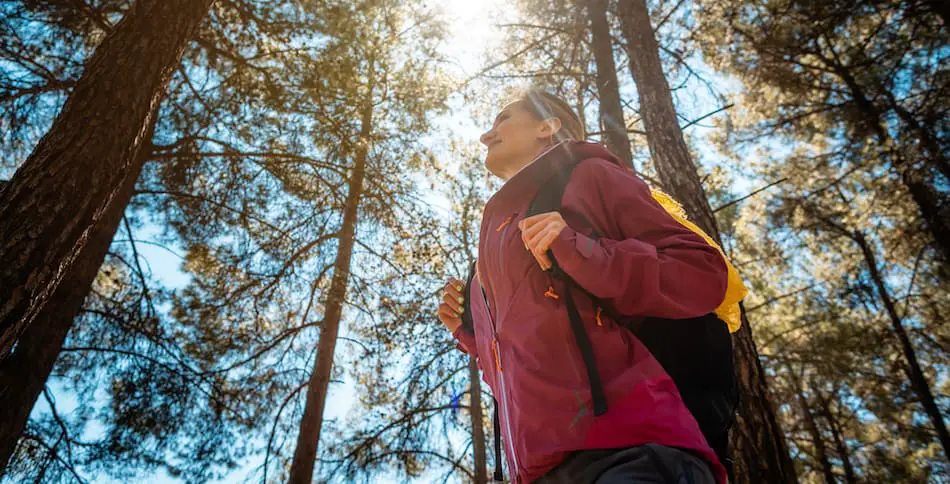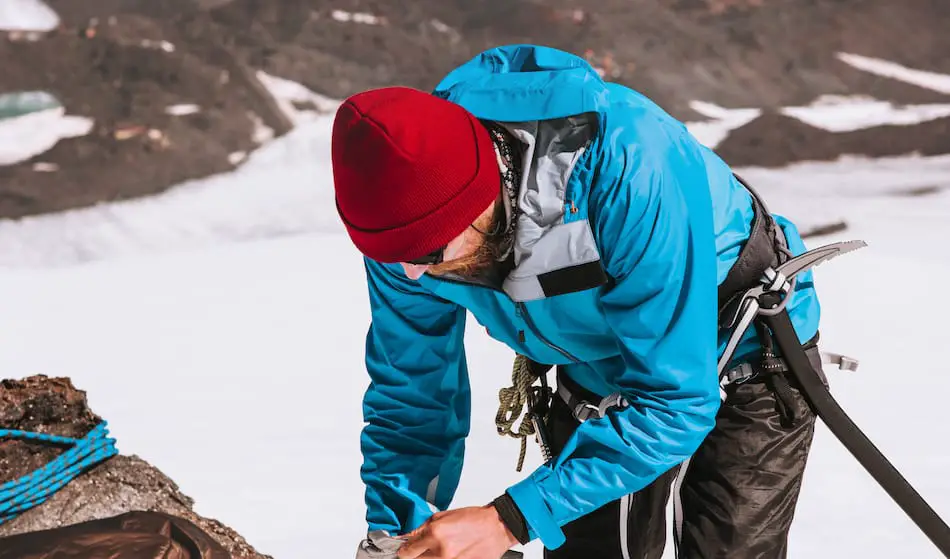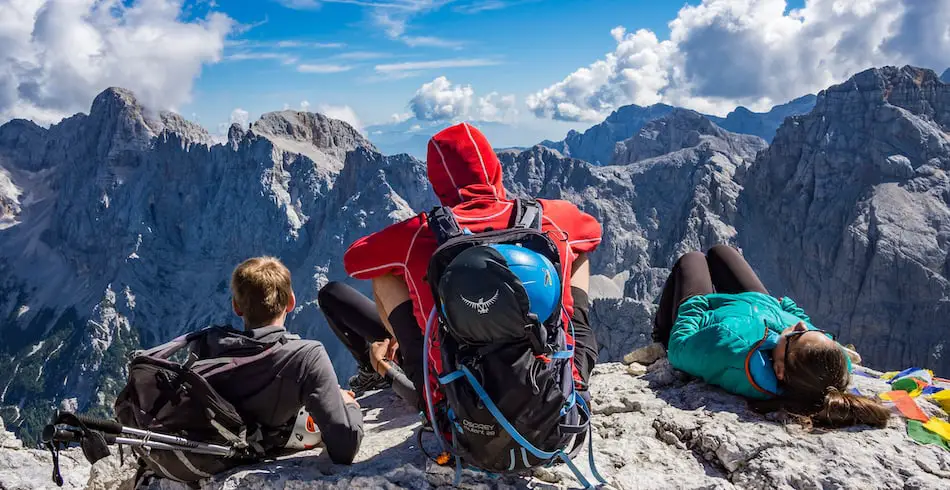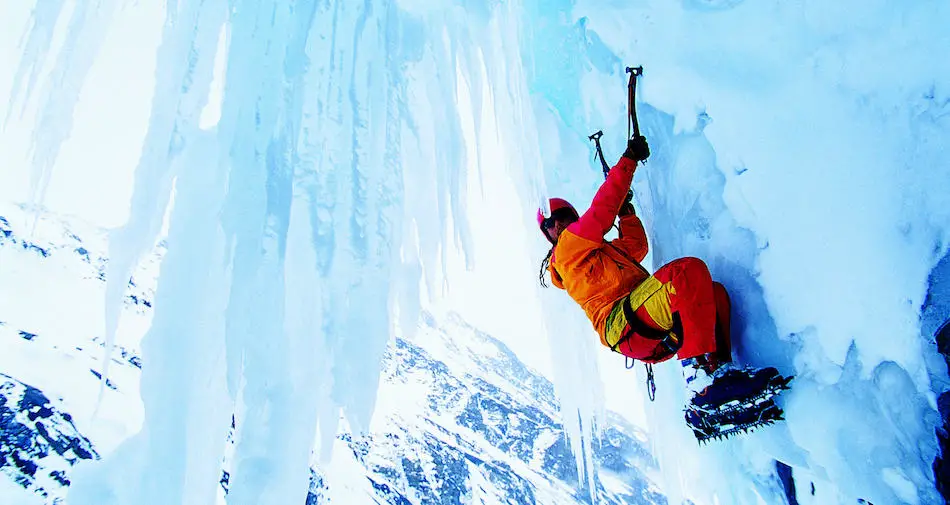
Lots of people who get into hiking think about making the jump to mountaineering. I’ve written the following guide to help show what that looks like!
So, what’s the difference between mountaineering and hiking? Mountaineering is more specified, extreme version of hiking that combines other skills like rock climbing and skiing.
Hiking has a broad definition, but it usually just means getting from point A to point B in nature. Within that there are lots of different forms of hiking — trekking, peakbagging, etc.— but that’s the main point of the activity. Mountaineering, by contrast, is the art of summitting technically difficult mountains. Although the base of the two activities is similar, and they share a lot of overlap, mountaineering is much more difficult and riskier.
Mountaineering vs. Hiking

Hiking can be considered the ‘base’ of mountaineering. Really, all mountaineering involves is hiking long distances over challenging terrain, with some more technical elements built in. At its core, though, it shares a lot of similarities with hiking.
Because of this, many people use hiking as a gateway into more challenging activities like mountaineering. If you want to start summitting serious mountains, or have dreams of travelling to the Himalayas, there’s probably no better place to start than with hiking.
Just because there’s an overlap, though, doesn’t mean that everyone will enjoy both activities. There are some pros and cons to each that you should consider before deciding if you want to transition from hiking to mountaineering.
With that being said, though, there are some stark differences between the two:
Danger
The most prevalent thing to consider is how much more dangerous mountaineering is. Hiking is a moderately hazardous activity: you have to worry about natural hazards, twisted ankles, exposure to the elements, and some fall danger.
Mountaineering, by contrast, is one of the most dangerous activities in the word. On the most extreme mountaineering challenges in the world (like K2), upwards of 25% of people who summit the mountain end up dying.
Technical Requirements

One of the great things about hiking is how inclusive it is. Almost anyone can participate, no matter their age, fitness level, or experience. While you won’t be able to do every hike without training, there’s a hike out there for everyone.
Mountaineering, by contrast, takes years of training to be able to do at even an introductory level. There are a variety of skills that you need to master before you’ll be ready to head out on a non-guided mountaineering expedition.
Goal
As I said in the opening, hiking is a very relaxed and un-demanding activity. There isn’t always an end goal, and most of the time you can just go out and have fun.
Mountaineering usually has a define objective, and mountaineers will place themselves in extreme danger to try and reach it. Most of the time this is a summit of a particular mountain.
For an example of some of the most extreme, goal-obsessed mountaineers out there, check out the trailer for Meru:
Equipment
The final, main difference between mountaineering and hiking is the equipment needed. To hike, all you really need is a pair of boots, a backpack, and some food and water. More technical hikes will require more gear, but you can get by with just that.
Mountaineering, however, requires a long list of equipment. Check out my full list here, but even the most basic mountaineering expedition will require:
- Boots
- Proper clothing
- Harness
- Rope
- Protection
- Helmet
- Emergency supplies
- Crampons
- Ice Axe
Which Activity is For Me?

So, if you’re wondering about whether you want to make the transition from mountaineering to hiking, I’ve written up some pros and cons of each to help you decide.
Pros of hiking:
- Accessibility: Almost anyone can start hiking no matter your age, experience, or fitness level.
- Geographic ease: Mountaineering can only be performed where there are mountains (obviously). Hiking, by contrast, exists almost everywhere in the world.
- Low cost: You can get good hiking equipment for less than $500 (and you probably don’t need to spend anything right off the start). Mountaineering will cost you several thousand dollars to get into.
- Safety: Not everyone likes risking their life just for fun. Hiking is a great way to enjoy the outdoors without much danger.
Cons of hiking:
- Not as fulfilling: Really, there aren’t that many downsides to hiking, but one of the main reasons that people make the jump to mountaineering is for the extra challenge, danger, and reward that it provides.
Pros of mountaineering:
- Remoteness: There’s something special about getting off the beaten path and going where very few people can go. Mountaineering lets you experience that like few other activities.
- Excitement: Because of the danger and the variety of skills you need, mountaineering can be more exciting and variable than hiking (which can sometimes get monotonous)
- Challenge: Some people love pushing themselves, and mountaineering provides an endless playground for you to test your skills against.
Cons of mountaineering:
- Danger: The big pitfall of mountaineering, as we’ve already talked about, is how dangerous it is.
- Cost: Like I mentioned above, mountaineering can be really expensive to get into.
- Time: Similar to the cost, you need to dedicate a significant amount of time to becoming a good mountaineer, and not everyone is able to do so.
Mountaineering Skills
I’ve mentioned a couple of times the variety of different skills you need to be a good mountaineer. Now, I want to do more into detail about all the different activities you’ll need to be at least competent at before you’re ready to make the transition from mountaineering to hiking.
Hiking

Although it may seem a little obvious, the first thing you need to do is be a good hiker. This involves a few different things:
- Physical fitness: There’s no good metric, but being able to easily walk 20 kilometres with a 20 pound pack would be a decent starting point.
- Navigation: Knowing how to work a map, compass, and GPS are necessities to be a good hiker. You should also be good at route-finding (picking the easiest way through tricky sections).
- Basic competency: This last category includes all of the little things that go into being a good hiker. This is stuff like knowing how much water to bring, trimming down your pack weight, some basic emergency survival, and knowing what gear works best for you.
Rock Climbing
If you’re looking at getting into mountaineering, I would start by becoming a good rock climber. Not only is this a necessary skill to be able to tackle hard mountains, but it will also teach you a slew of other valuable skills like rope management.
The starting point for every new climber is the gym, but I wouldn’t stop there. Once you build up some strength and comfort you’ll want to transition into outdoor climbing; once you’re comfortable outdoors, you’ll want to start multipitching.
Once you’re comfortable multipitching, it’s time to move on to trad climbing. This will build the foundation for your mountaineering skills, as you’ll learn how to place protection in the rock. You’ll also get experience working with twin and half rope systems, and important skill for any mountaineer.
Ice Climbing

Another skill you’ll need to know is ice climbing. Although it might seem similar to rock climbing, the two actually have some pretty major differences, and it’s an entirely different skill that needs to be learned.
Ice climbing is something that takes a long time to become good at. You should be prepared to spend about thirty days outside on ice before you’re ready to lead, which is the bare minimum that you’ll have to know to do before you can use this still mountaineering.
Avalanche Safety
Avalanches are a constant danger when mountaineering, and you need to be able to read terrain effectively to avoid them. You should also have some basic avalanche safety training so that you and your partners will be able to perform rescues on each other.
There are avalanche-specific safety courses out there, but you can only learn so much from them. I would recommend taking the courses and then refining your skills while backcountry skiing; this is a great way to get some real-world experience reading avalanche terrain, while also picking up a new activity.
Glacier Travel
From the outside, glacier travel looks a lot like plain old walking. Beneath the surface, though, it’s actually a very technical activity that requires a lot of skill.
The main danger on glaciers is crevasses. These are splits in the glacier, miniature canyons that can be up to hundreds of feet deep. They’re often covered by a thin layer of snow that makes them invisible; step on the snow, though, and it will give away, sending you plummeting into the crevasse.
To prevent this, good rope management is essential on glaciers. You and your partner have to know how to rope up to catch each other if you fall and be able to perform rescues to pull each other out of the crevasse.
